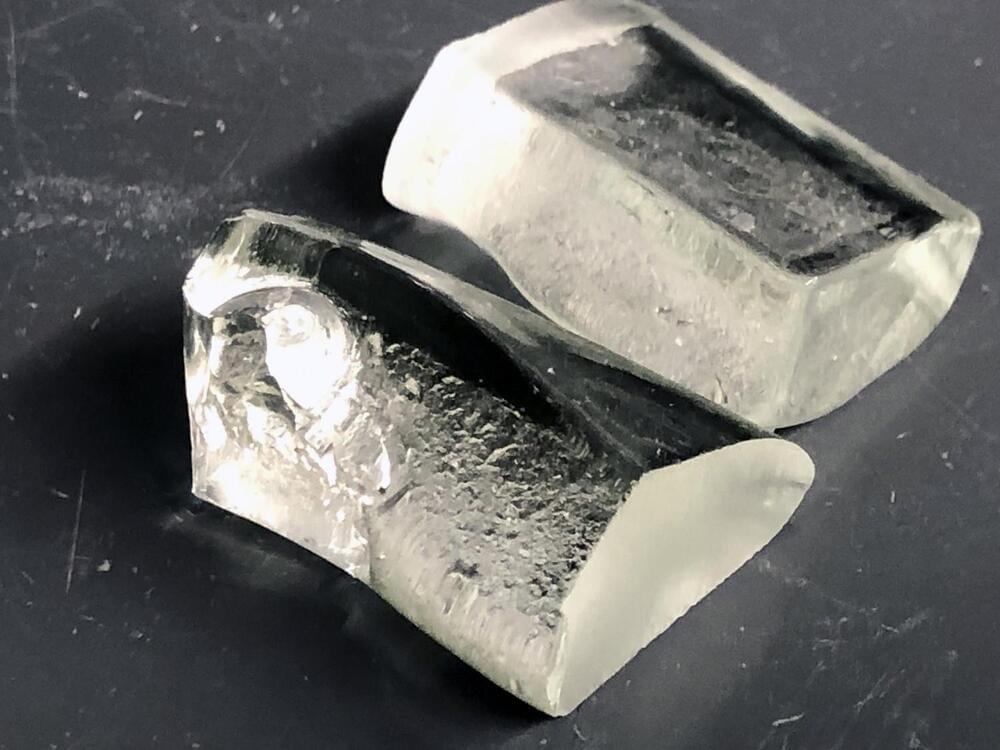Fight fibromyalgia fatigue, pain, and stress with these tips from WebMD. See how to get the rest you need, talk with your family, get energy from exercise, and more.


Earlier this year, scientists completed the first transmission of energy from space to earth, potentially revolutionizing carbon-free energy. The scientists behind the incredible achievement explain the process. Jeff Glor reports.
“CBS Saturday Morning” co-hosts Jeff Glor, Michelle Miller and Dana Jacobson deliver two hours of original reporting and breaking news, as well as profiles of leading figures in culture and the arts. Watch “CBS Saturday Morning” at 7 a.m. ET on CBS and 8 a.m. ET on the CBS News app.
Watch CBS News live: https://cbsn.ws/1PlLpZ7c
Download the CBS News app: https://cbsn.ws/1Xb1WC8
Follow “CBS Mornings” on Instagram: https://bit.ly/3A13OqA
Like “CBS Mornings” on Facebook: https://bit.ly/3tpOx00
Follow “CBS Mornings” on Twitter: https://bit.ly/38QQp8B
Try Paramount+ free: https://bit.ly/2OiW1kZ
For video licensing inquiries, contact: [email protected]
Harsh Kumar, Piper Sandler managing director, joins CNBC’s ‘Power Lunch’ to discuss why he believes not all chipmakers take a direct hit from China’s curb on the rare metals used in semiconductors and more. For access to live and exclusive video from CNBC subscribe to CNBC PRO: https://cnb.cx/2NGeIvi.
» Subscribe to CNBC TV: https://cnb.cx/SubscribeCNBCtelevision.
» Subscribe to CNBC: https://cnb.cx/SubscribeCNBC
Turn to CNBC TV for the latest stock market news and analysis. From market futures to live price updates CNBC is the leader in business news worldwide.
Connect with CNBC News Online.
Get the latest news: http://www.cnbc.com/
Follow CNBC on LinkedIn: https://cnb.cx/LinkedInCNBC
Follow CNBC News on Facebook: https://cnb.cx/LikeCNBC
Follow CNBC News on Twitter: https://cnb.cx/FollowCNBC
Follow CNBC News on Instagram: https://cnb.cx/InstagramCNBC
https://www.cnbc.com/select/best-credit-cards/
#CNBCTV

Worldwide, glass manufacturing produces at least 86 million tons of carbon dioxide every year. A new type of glass promises to cut this carbon footprint in half. The invention, called LionGlass and engineered by researchers at Penn State, requires significantly less energy to produce and is much more damage resistant than standard soda lime silicate glass. The research team recently filed a patent application as a first step toward bringing the product to market.
“Our goal is to make glass manufacturing sustainable for the long term,” said John Mauro, Dorothy Pate Enright Professor of Materials Science and Engineering at Penn State and lead researcher on the project. “LionGlass eliminates the use of carbon-containing batch materials and significantly lowers the melting temperature of glass.”
Soda lime silicate glass, the common glass used in everyday items from windows to glass tableware, is made by melting three primary materials: quartz sand, soda ash and limestone. Soda ash is sodium carbonate and limestone is calcium carbonate, both of which release carbon dioxide (CO2), a heat-trapping greenhouse gas, as they are melted.
See my explanation of the spent fuel rods and why if something is not done to get water to the spent fuel rod pools at the Zaporizhzhia Nuclear Plant there will be a catastrophic radiation release that may trigger WWIII. See why Russia and Ukraine are each saying the other is going to blow up the cooling pools and the plant. See what that means for you. Take your preps seriously!
See the Special Deals at My Patriot Supply: www.PrepWithGreg.com.
Outstanding Antioxidant For Your Health: https://shopc60.com/
Use discount code: Greg10 for 10% off.
True Leaf Market brings you a great selection of Non GMO heirloom seed: http://www.pntrac.com/t/TUJGRklGSkJGTU1IS0hCRkpIRk1K
Eden Brothers’ seeds are non-GMO.
https://www.pntra.com/t/SENJRklJS0ZDR05OSUxJQ0dLTktLTw.
Save 1% on GoldBacks from Green Greg’s affiliate link (Use coupon code GreenGregs):

A seemingly magical material can block microwaves, infrared (IR) heat, and light and then magically shift to a transparent state that also allows IR and microwaves to pass through simply by being stretched or contracted.
Inspired by the properties of squid skin, which can shift from translucent to opaque due to the presence of iridocytes and chromatophores, the new material could help create stealth materials, safeguard electronic devices, dramatically improve energy efficiency in commercial buildings, and even protect against microwave weapons.
No One Has Accomplished All of These Feats in One Material .

Year 2015 😗😁
Physicists in France have figured out how to optimise an advanced type of electric rocket thruster that uses a stream of plasma travelling at 72,420 km/h (45,000 mph) to propel spacecraft forward, allowing them to run on 100 million times less fuel than conventional chemical rockets.
Known as a Hall thruster, these engines have been operating in space since 1971, and are now routinely flown on communication satellites and space probes to adjust their orbits when needed. These things are awesome, and scientists want to use them to get humans to Mars, except there’s one — rather large — problem: the current lifespan of a Hall thruster is around 10,000 operation hours, and that’s way too short for most space exploration missions, which require upwards of 50,000 hours.
Hall thrusters work just like regular ion thrusters, which blast a stream of charged ions from an anode to a cathode (positively and negatively charged electrodes), where they get neutralised by a beam of electrons. This causes the elections to shoot one way, and the attached rocket to shoot another, propelling it forward.



What if water could be boiled more quickly and efficiently? It would benefit many industrial processes by reducing energy use, including most electricity generating plants, many chemical production systems, and even cooling systems for electronics.
Improving HTC and CHF
Now, MIT scientists have conceived of a method to do just that, according to a press release by the institution published on Tuesday. The researchers have found a way to improve at the same time the two key parameters that are conducive to the boiling process, the heat transfer coefficient (HTC) and the critical heat flux (CHF).